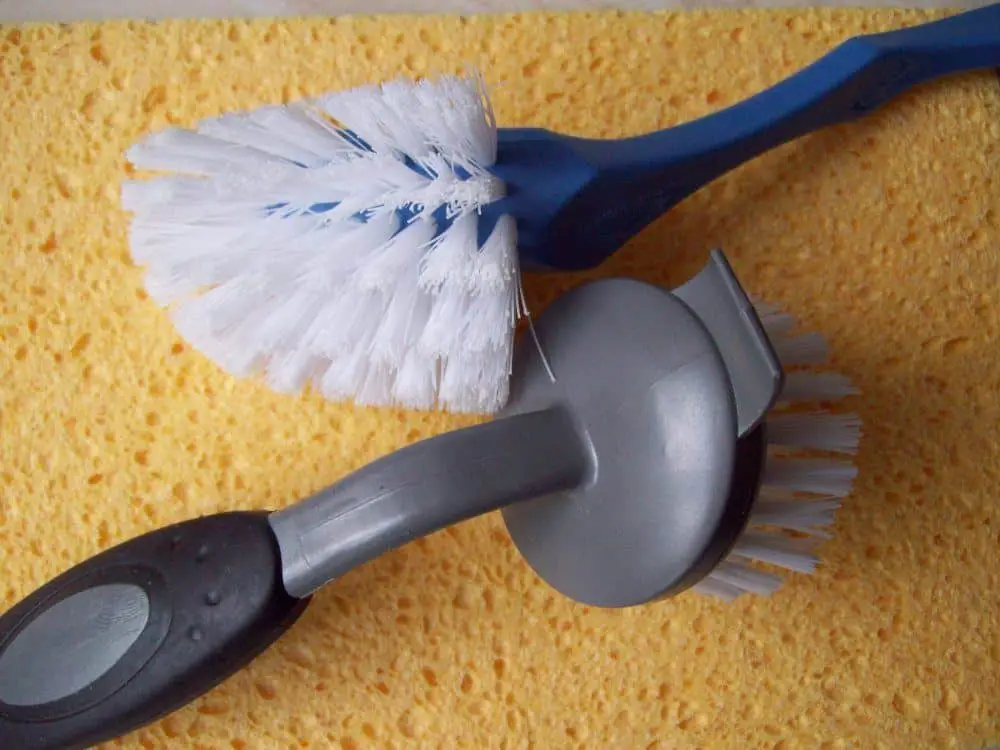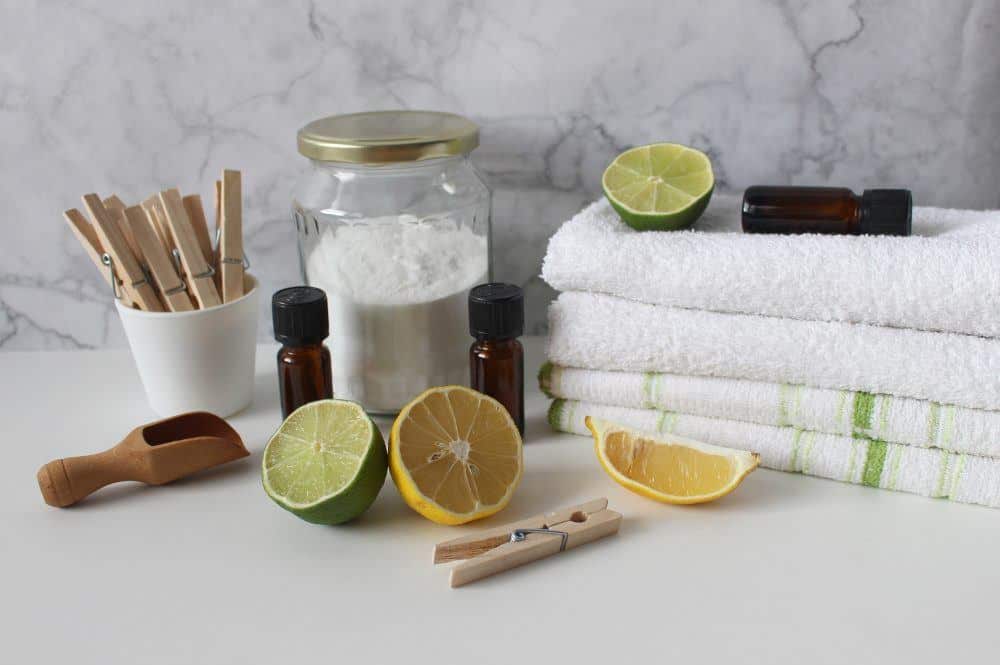Mold grows and thrives in warm, moist, poorly ventilated areas, such as your bathroom, laundry room, kitchen, and basement, where air circulation is typically poor and humidity is always high. As a result, mold and mildew are likely to be found in these rooms—on the walls, between the tiles, caulking, or ceilings.
Mold can be removed naturally from your shower using common household products such as salt, vinegar, and baking soda along with a stiff brush and scrubbing. Other household chemicals that can also be used include chlorine bleach or hydrogen peroxide.
In this article, we will teach you how to clean grout naturally and effectively, not only for shower tiles but also for your bathroom walls and kitchen.
Table of Contents
Removing Mold in Shower Grout
Mold removal from shower grout requires some effort and patience. Not only should you clean all visible mold patches, but you should also disinfect the entire area to ensure that all spores have been killed and your bathroom or kitchen is completely safe and sanitary.
So, how do you naturally clean shower grout? There are numerous methods for removing mold from shower grout and preventing it from returning.
Use Chlorine Bleach
Chlorine bleach is the most commonly used cleaning product to clean and remove shower grout because it not only cleans the mold effectively but also kills the mold spores and disinfects the entire area. It also cleans soap residue from the grout and tiles. This homemade grout cleaner can be used in two ways to remove mold from shower grout.

Method 1
To make this homemade grout cleaner, combine 1 part chlorine bleach and 4 parts water in a spray bottle. Wait about 30 minutes after spraying the grout cleaner on the affected area. Scrub the grout lines in the tile vigorously with a toothbrush. Rinse thoroughly with cool water. Repeat the process if necessary.
Method 2
Scrubbing the chlorine bleach directly on the mold or mildew with a toothbrush is another way to use this homemade grout cleaner. Allow the bleach to sit on the grout for 20–30 minutes before rinsing with warm water. Repeat the process if necessary.
However, there are a few things to keep in mind when using chlorine bleach to clean grout. Because bleach can cause discoloration or fading, avoid using it on colored grout or shower tiles. Because chlorine bleach fumes can irritate your eyes, respiratory tract, and skin, it is recommended that you use rubber gloves, goggles, and a mask when removing shower grout.
Also, while cleaning with bleach, open the windows or ventilate the room well, and leave the windows and doors open for one to two hours after you finish cleaning grout to ensure that all harmful fumes are removed from the room.
Use Baking Soda
Baking soda is an effective natural cleaner ingredient for cleaning grout. While baking soda is fairly effective at cleaning mold in shower grout and will not discolor or harm the tiles or pose any health risks to you or your family, it may not be as effective as bleach at cleaning and killing mold spores. There are several ways to clean grout with baking soda.
In the same way, you can use borax powder to clean mold and mildew from shower grout. Borax is a highly alkaline substance that works well as a tile cleaner, disinfectant, and deodorizer.
Use Salt
You can also use salt to make your own grout cleaner. You might be surprised to learn that salt can effectively kill single-celled organisms like mold. To effectively remove mold from shower grout and clean tile, simply apply salt to the grout and other mold-affected areas.
Wet a towel to accomplish this. Scrub the moldy grout lines with the damp towel after sprinkling salt on it. Allow the salt to sit overnight before rinsing the tile surfaces with clean water in the morning.

Use Vinegar
Vinegar is an excellent natural cleaning agent that can be used to make your own mold cleaner. Because it is acidic, it creates an environment that prevents mold and bacteria from growing. When you first notice mold growth on the shower grout, make a spray bottle solution of equal parts water and white vinegar and generously spray the homemade grout cleaner mixture onto the affected area.
Allow the grout cleaner to sit for about 30 minutes before vigorously scrubbing the tile surfaces with a bristle brush and rinsing with warm water. For best results, it is recommended that you repeat this cleaning process several times.
In the same way that vinegar is used to clean grout, you could use tea tree oil instead. In a spray bottle, combine 2 teaspoons of tea tree oil with each cup of water and spray this homemade grout cleaner on the moldy shower tile and grout. Wait a few hours before rinsing with clean water. When cleaning grout with these natural cleaners, make sure the windows are open and there is good air circulation in the room to offset the strong tea tree oil or vinegar smell.
However, if the shower mold growth is extensive and difficult to clean, natural products such as vinegar and tea tree oil may not be effective in cleaning grout and removing mold and mildew from tile surfaces.
Use Hydrogen Peroxide
When all of the other methods fail, you can use hydrogen peroxide as a grout cleaner for shower mold removal because it is a very effective fungicide cleaner as well as a whitening agent. Make a grout cleaner mixture of hydrogen peroxide and water and spray it on the moldy area; however, applying the hydrogen peroxide directly on the moldy grout can be more effective and result in better grout cleaning results.
Conclusion
After reading about some of the natural methods for cleaning mold on shower grout, you will undoubtedly agree that the best way to clean mold in shower grout is to use natural grout cleaning products. However, even strong cleaners like bleach or hydrogen peroxide may not be strong enough to clean grout, kill mold spores, and completely eliminate the problem.

